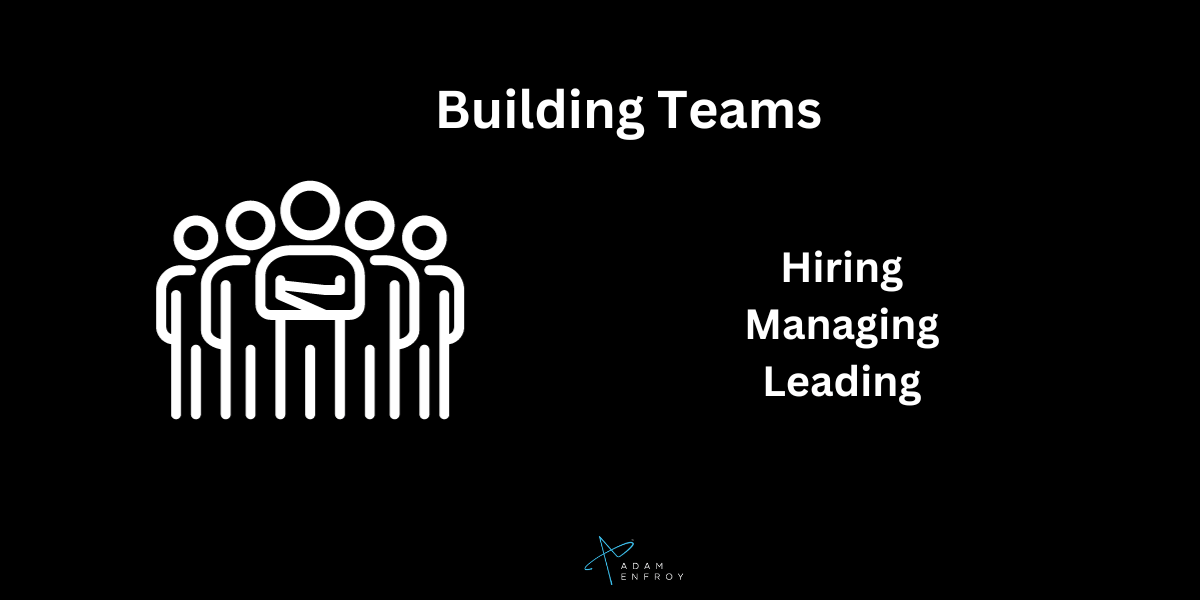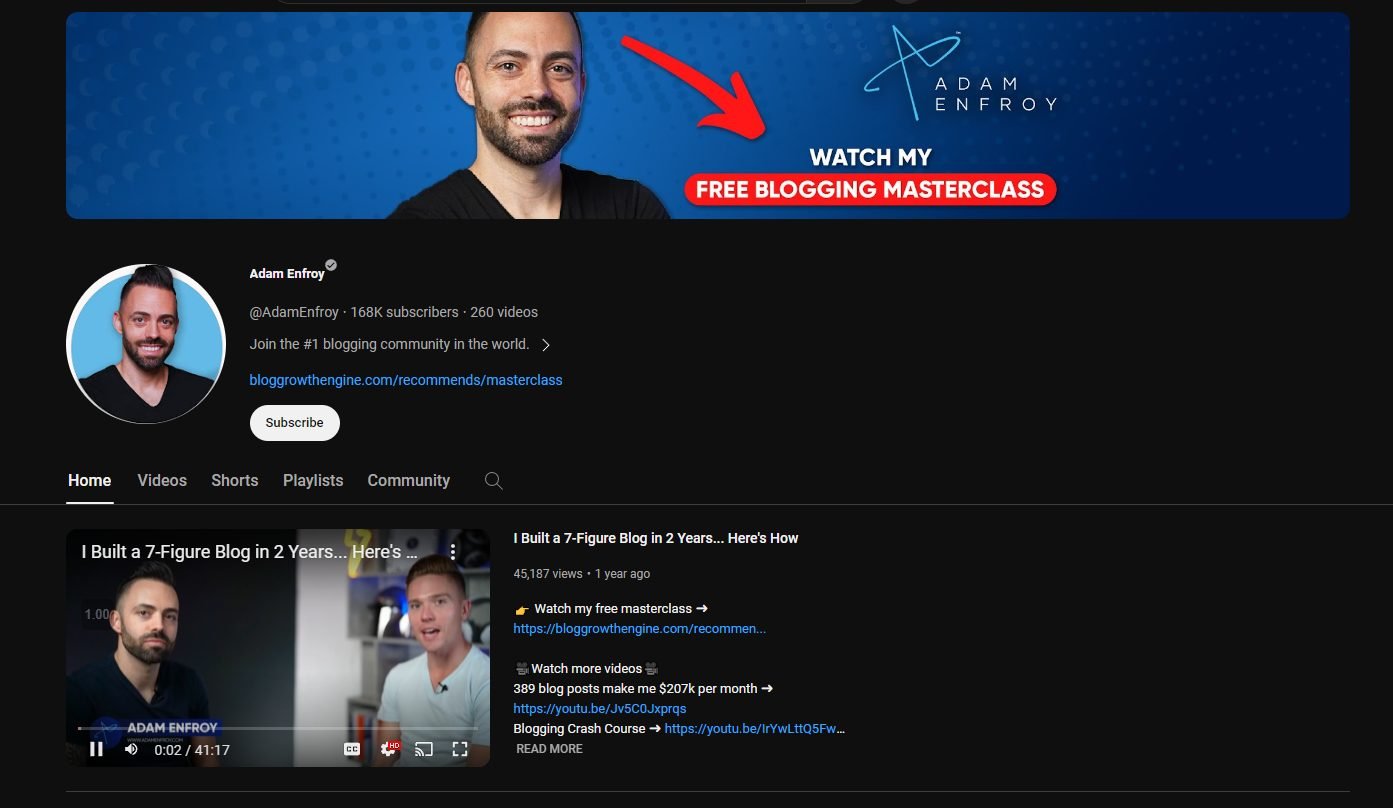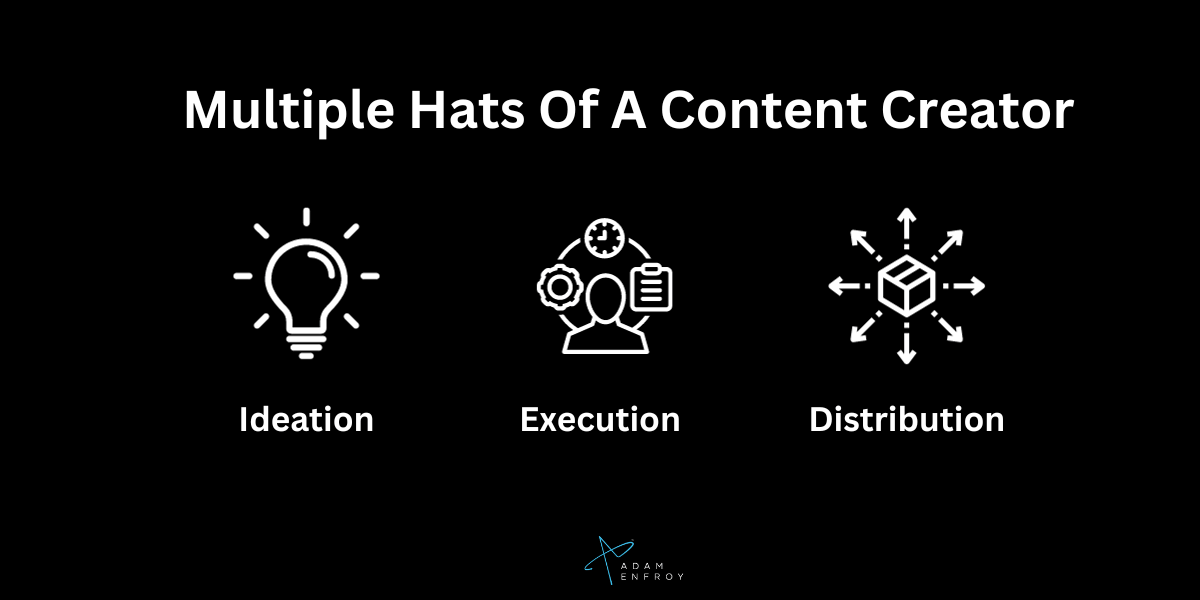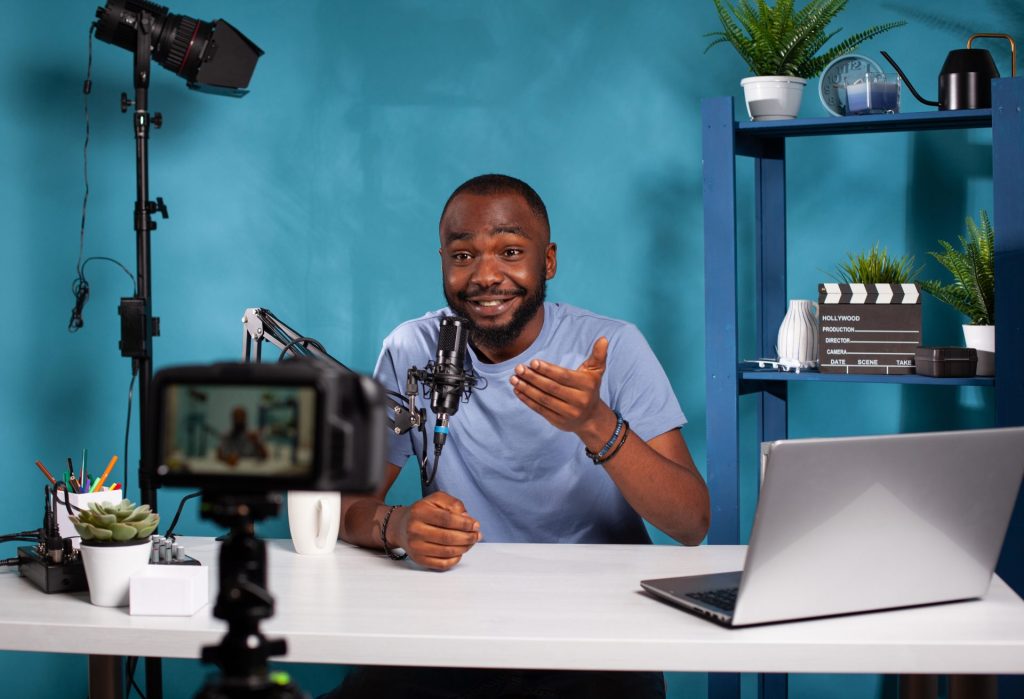



A content creator produces content. That content then becomes the core of their money-making business.
Duh, right?
While this sounds like an oversimplification, it’s not. Successful content creators focus on providing value through the content they produce.
A better question might be, “What does a successful content creator do in their day-to-day?”
Well, it depends on the stage they’re at.
A new content creator needs to produce content. They also need to develop the right skills, such as audience understanding, developing great hooks, and producing consistently engaging content, to help their content reach the right people.
In this article, I’ll cover exactly what you need to do to go from a beginner content creator to a more advanced one. I’ll break down the various responsibilities you’ll have at the different stages during your content-creating trajectory and the different income possibilities that come along with them.
The day of a content creator – tasks and income possibilities
As a content creator, you’ll likely move through three different stages, each one having a different set of responsibilities and associated earning potential.
Stage 1: the newbie content creator
When starting as a content creator, your typical day will involve wearing multiple content creation hats.
First, you’ll need to develop ideas about what your content will cover. Whether you’re writing blog posts, creating YouTube videos, or posting on social media, it all starts with ideas.
Next, you’ll bring the ideas to life (a.k.a. execution). This is generally the most time-consuming task for a Stage 1 content creator. Writing, filming, editing, and designing all take time and effort.
Finally, you’ll need to share your content.
Whether you…
- Promote content on social media
- Use other influencers to spread the message
- Go directly to your audience (such as through an email newsletter)
- Or any other way
…For people to consume your content, they need to know it exists.

For a Stage 1 content creator, income is dependent on hours worked
At this stage in the content creation cycle, there’s one simple truth:
no work = no income
Making money depends on the quality and quantity of your output. No output means no money.
Stage 1 is where everyone starts. However, many creators realize they want to quickly move to the next stage. Being on the content creation hamster wheel for a long time could lead to burnout.
So what kind of income can you expect as a Stage 1 content creator?
It all depends on the method you choose to monetize your content. Some creators go down the affiliate mareketing route, creating content that helps promote other people’s products and services. Others focus on creating good quality content and monetizing it using Google AdSense (especially for blogging and YouTube videos).
As creators ramp up their content production, they might find getting to $10K per month through their content (being a one-person business) is doable. After that, it might become challenging to scale this business model.
That’s where Stage 2 comes in.
At this stage, content creators will have realized they can use their time better—through leverage. Leverage means getting more output for the same (or even less) input.

At this stage, you should ask yourself this question:
What activities can I outsource to others so I can:
- produce more (and better) content
- while doing less work?
The answer generally comes down to finding tasks others can do (sometimes even better than you) and outsourcing these tasks. With the time creators free up through outsourcing, they can focus on more valuable tasks.
Here’s a quick quiz to give you an idea of what I mean:
Which tasks are more valuable in a YouTube-based content creation business?
- Sending email outreach to hundreds of potential partners or brainstorming video ideas?
- Shooting videos or adding animations in post-editing?
- Deciding on the business’s long-term vision or creating YouTube descriptions?
Answer: Brainstorming video ideas, shooting them, and focusing on the long-term vision are much higher-leverage activities than the others.
Moreover, plenty of talented people (one can hire at an affordable rate) can send emails, add animations, and create descriptions.
A content creator who can let go of these “lower-value” tasks and focus on working on the business (not in the business) is a Stage 2 content creator.
Income possibilities for a Stage 2 content creator: Getting closer to 6 figures?
At this stage, content creation becomes very profitable. A content creator that can add more affiliate income streams (as discussed in Stage 1) and add various sponsorships to their content will increase their earning possibilities.
It’s not uncommon for creators to earn an income of $50k-$100k monthly by:
- getting crystal clear on the type of content they want to create
- hiring a few team members to help them create this content.
Many content creators choose to stop here. But there are always a few who want even more. That’s where Stage 3 comes in.
Stage 3: being the leader of your team
As a content creator moves to Stage 3, their day-to-day tasks decrease in volume. They only focus on stuff that really moves the needle. Anything that’s not required of them (i.e., not critical to their business success) gets delegated.
At this stage, the content creator is simply the face of the brand responsible for high-level planning. This might sound like heaven on earth, but it also has its downsides.
If you’re getting to Stage 3, this means you must have a team of people handling your various business aspects. And managing a team requires different skills compared to only managing yourself (remember those crucial skills I mentioned at the beginning?)

Stage 3 income? Virtually unlimited
At this stage as a content creator, you’ll probably offer a range of products and services. These generally come in at various price points and cater to people with different requirements and who need different levels of help.
Here’s an example—let’s say a content creator built a blog about online marketing. The creator has posted many articles on online marketing and people now consider them an authority on that topic.
The content creator now starts creating products to help those wanting more than free articles.
First, customers can buy the creator’s digital products to help them set up their blogs. These are the lowest-priced products as the customers must do all the work once they buy them.
Next, the content creator builds a video course that goes into more detail about the setup of blogs. This helps those who want a better solution (video guides rather than text-based guides) and are willing to pay a bit more.
The content creator then uses a community platform to get people together. Customers can now get group help with any problems they face. The income from this monthly membership allows the content creator to hire coaches to help people get results quickly.

Finally, the content creator hires specialized coaches to work 1-on-1 with clients. This high-priced service provides custom solutions to ensure clients get results quickly while facing as little trial and error as possible.
Having these various products and services (along with a team in place to provide the best solutions) means a content creator can make a lot of money. I’m talking six figures (and potentially more) here.
It’s not something that will happen overnight. But it’s also something that’s not impossible to achieve.
A day in the life of a content creator
Based on the above information, here’s what a day in the life of a successful content creator might look like. Notice the different daily activities based on the stage a content creator is in.
|
Time of Day |
Stage 1 Activities |
Stage 2 Activities |
Stage 3 Activities |
|---|---|---|---|
|
8:00 AM |
Idea Generation: Brainstorm content ideas based on audience interests and current trends. |
Strategic Planning: Review performance metrics and plan content strategy for the week. |
Team Briefing: Meet with the team to discuss the day’s objectives and long-term strategy. |
|
9:00 AM |
Content Creation: Begin writing a blog post or script for a video, or create graphics for social media posts. |
Content Review: Check the work done by the team, provide feedback, and make edits to ensure quality. |
High-Level Planning: Analyze market trends, brainstorm new business ventures, and plan for expansion. |
|
12:00 PM |
Lunch and Learn: Take a break to eat and watch educational content to improve skills. |
Networking: Engage with other content creators, potential collaborators, and influencers. |
Lunch Meeting: Discuss potential partnerships or new business opportunities with stakeholders or team leaders. |
|
1:00 PM |
Filming/Recording: Start recording videos or podcasts, or continue with graphic design. |
Content Production: Oversee the content creation process, ensuring that the team is on track with the day’s objectives. |
Market Research: Review competitor strategies, customer feedback, and industry updates to shape future plans. |
|
3:00 PM |
Editing: Edit videos, blog posts, or images, adding necessary touches to enhance quality. |
Email Outreach: Manage or review outreach campaigns for potential partnerships or sponsorships. |
Team Management: Meet with department heads to review progress, solve issues, and ensure alignment with business goals. |
|
5:00 PM |
Content Promotion: Share the day’s content across social media, send out newsletters, or engage with the audience. |
Content Scheduling: Plan and schedule upcoming content releases and promotional campaigns. |
Vision Casting: Reflect on and communicate the future direction of the brand to the team and stakeholders. |
|
6:00 PM |
Skill Development: Spend time learning new skills or improving existing ones through courses or practice. |
Self-Development: Read books, attend webinars, or take courses to improve leadership and content strategies. |
Relaxation: Wind down for the day, ensuring a clear mind for continued high-level thinking tomorrow. |
Moving through the stages: how Adam Enfroy leveled up through content stages
Adam Enfroy is a perfect example of a content creator who moved through the multiple stages mentioned above.
Originally, he started this blog where he was doing all the work. He wrote all the posts for the site along with guest posts to build backlinks.
Eventually, he started making hires. He brought in help to build these backlinks, write articles, and so on. He still focused on the important tasks, which included the blog’s vision, keyword research, and other factors.
As more people joined the team, he could focus on building his YouTube channel. Almost two years after starting this channel, he has over 165,000 subscribers and is publishing new videos consistently.

Like blogging, he’s also moving through the content creation stages on YouTube. He’s hired a video editor who does all the post-production changes. The editor is also a talented graphic designer artist who can handle thumbnail creation.
Adam also focused on building his blogging course to show others how he found success and how they could replicate it. He also created a YouTube course, teaching others what he’s learned on his video-creation journey.
Did you notice the pattern?
Adam always started by doing the work himself. Over time, he outsourced the time-consuming tasks that other skilled people could do. Even more importantly, he still focused on the vital content creation aspects.
At the time of writing, Adam had built a 20+ person team. That’s quite impressive considering how he started it all by focusing on just the next blog post.
Conclusion
Personally, I love living the life of a content creator. The fact I’m not bound to specific times to do things (unlike a traditional 9 to 5) is very appealing. Moreover, the earning potential is uncapped, which is always a plus.
There’s also a clear path to transition from content creation to building a business with multiple team members and scaling your operations—if you want to.
Alternatively, you can work with clients to take their businesses to the next level through the content you help them produce.
